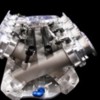Guys, I have poked around but having trouble finding what I'm looking for. Has anyone built this combo or something so close they can offer a build spec and how that build performs?
I am building an all aluminum 351W Windsor, World products alloy block, 180 degree Byars headers, and downdraft EFI 48mm IDA ITB's, because I want the sex appeal of that combo. However, I haven't selected cubes yet, a cam, stroked level, etc. I am also still considering cylinder heads. I would REALLY appreciate anyone who has a weber/ ITB setup and 180's to help me with thoughts on cam selection as ITB's tend to reduce bottom end torque but increase throttle response.
If that person also built a Windsor that would be even better. Thank you so much in advance!!! Cullen
PS, Id' prefer that nobody questioned my logic or reasoning on why I chose those components or a Windsor. I don't care about cutting deck lids and all that warning. Just want motor advice. Thank you!!!!
Original Post


